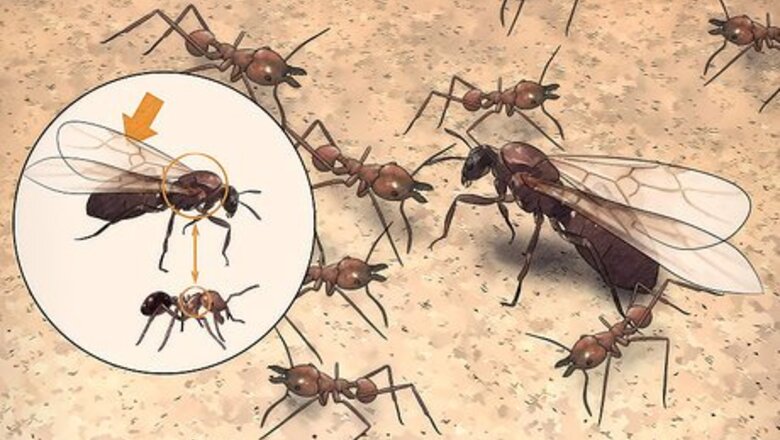
views
Finding the Source
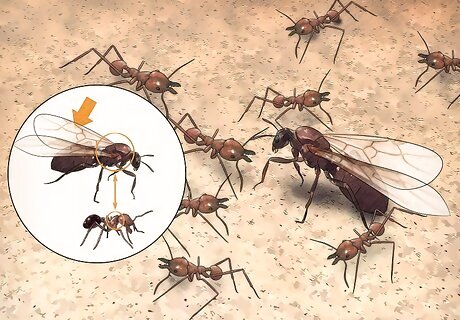
Identify the queen. Depending on the species of ant, the queen may be easy or hard to identify. In some species, the queen is much larger than the other ants in the colony. However, the easiest way to spot the queen ant is to look for the ant with wings. Queen ants in most species will have wings at some point in their lives. Because they have wings, after they lose them you can see where the wings were attached. Queens have a larger thorax (the middle section of the body) than the other ants.
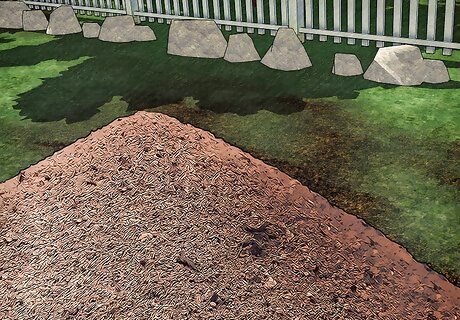
Find the nest. You may need to find the nest so you can kill the queen. The location of the nest depends on the type of ant. Some ants set up nests in the wood or flooring of your home. Others will be in garden sheds, potting soil, or gardens. Some ants will be in hills around your yard. Don’t kill the ants if you don’t know where the nest is. Follow the ant trail to the nest.
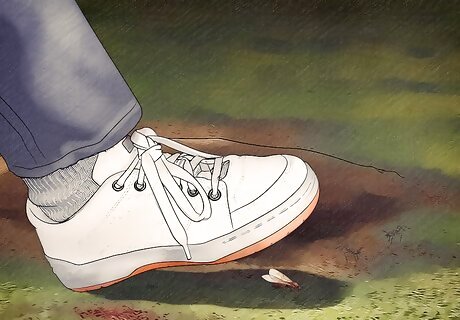
Disrupt the nest to look for the queen. Sometimes, you may come across the queen ant around the nest. To try and urge the queen ant out, knock over the ant hill or disrupt it somehow. If you see the queen ant, kill her. Be careful when rooting out the queen, so you don’t get bitten. Never use this method with fire ants.
Using Natural Methods
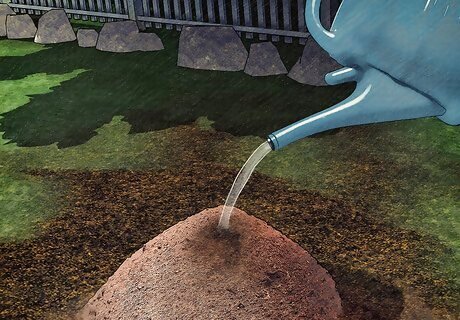
Use hot water. One natural way you can try to kill the queen ant is to use water to flush the colony. Start with about two to three gallons of boiling water. Pour it directly onto the ant hill. This should kill any ant it touches, including the queen ant. Don’t do this to fire ants. If you accidentally get any on you, you can get injured.
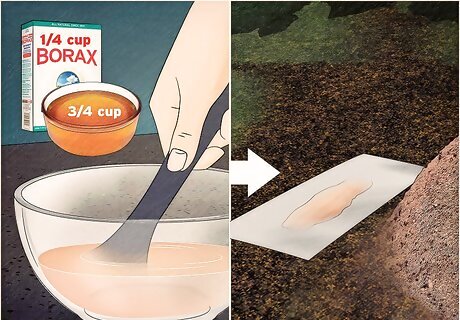
Try borax. Making a solution of borax or boric acid and a sugary substance can help kill ants, including the queen. Mix ¾ cup of microwave heated maple syrup or honey with ¼ cup of borax. Stir until smooth and combined. This creates a liquid bait for the adult ants. To make a solid bait that will kill larva, use the same ratio of powdered sugar to borax, mixing until it is combined. Place large drops of the baits in the middle of a trail of ants, including any walls, railings, or sidewalks. Place the liquid and solid mixtures along the trail as you near the nest. If there are multiple trails, do it on each trail. Don’t place borax in the garden or on soil. If you have ants in your garden, place the solution on something to protect the soil and your plants. You can buy borax at the supermarket or home improvement stores. Borax is toxic. Make sure to prevent pets and children from getting into this solution.
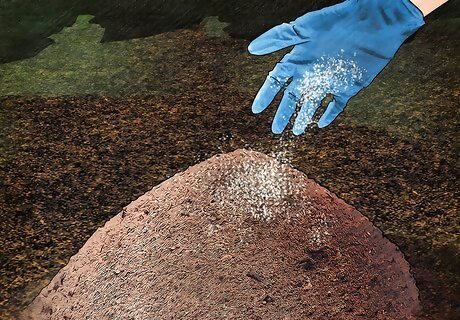
Try cornstarch. Cornstarch is another natural method you can try to kill the queen ant. Place a line of cornstarch around the nest or ant hill. The ants will take the cornstarch into the colony to be used as food. The fiber content in the starch will make the ants swell and die, including the queen if she eats the cornstarch. This may take a while to work, but may be more effective and long-lasting.
Killing the Queen with Chemicals
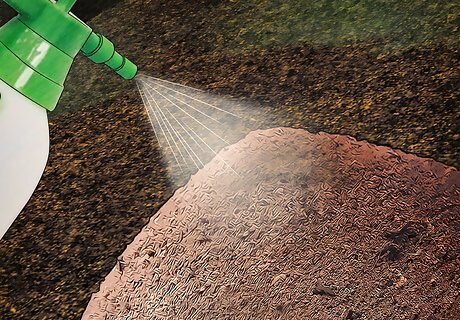
Use insect killer. If you know where the nest is, use spray insect or ant killer to kill the ants and the queen. Read the label to look for specific ingredients, like bifenthrin, permethrin, or deltamethrin. Make sure to follow the instructions exactly since ant killer is toxic. Protect your eyes and face from chemical sprays. Be careful outside if there is wind or a breeze. Make sure to use caution with any pesticides in your home. Make sure to protect pets and children from getting into the ant killer.
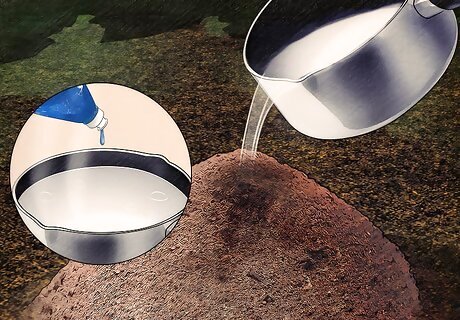
Try cleaning supplies. If plain boiling water doesn’t help, cover the ant hill with cleaning supplies. Use what you have you in your kitchen. Try dish detergent mixed with hot water. Pour it on top of the hill. Try using a dry cleanser, like Comet, in the kitchen. Shake out a light layer. This is especially effective where the kitchen counter meets the wall, or under the sink. The ants you see will walk through the cleanser and take it back to the nest. Leave the cleanser layer out overnight or up to 2 days. Use cardboard to push the powder into the sink, then use a wet rag to clean the counters and sink. If ants return, reapply the cleanser. Don’t use things like cleansers or bleach mixtures in areas where your pets or children may come across it. If you want to try something stronger, try pouring a cleanser or bleach mixture. However, be careful to not bleach colors out of surfaces, especially if using bleach. Also, you will need to use diluted bleach and ventilate the room.
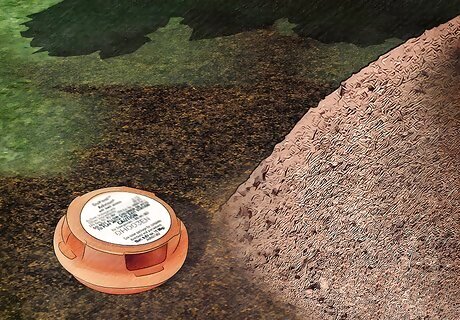
Use ant bait. Ant bait is a type of pest killer that is poisonous to ants. The ant bait has a sweet substance mixed with the poisonous substance. It attracts ants, and the ants mistake it for food, so they carry it back to the nest. The poison in ant bait is carried back to the nest and is then ingested by ants. If an ant dies and other ants eat it, they will ingest the poison that killed the ant. The ants will spread the poisonous food to the colony, including the queen. However, keep in mind that this can take up to three weeks. When you're doing this, don't spray or treat any ant trails that you see. Only 15% of the ants in the colony are foragers, and they will be quickly replaced. Instead, let them carry the ant bait back to the colony.
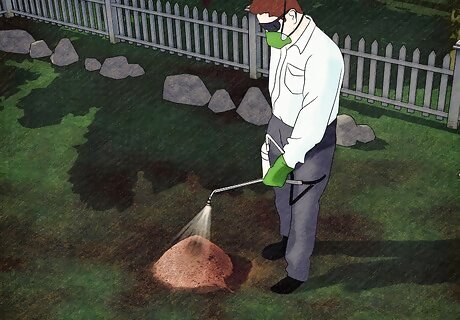
Hire a professional. If you fail to kill the queen ant and cannot get rid of the ants, call an exterminator. They can use methods to kill the ants and prevent infestations. Exterminators can be expensive, so you may want to try these other methods before calling someone to help.
Preventing Reinfestation
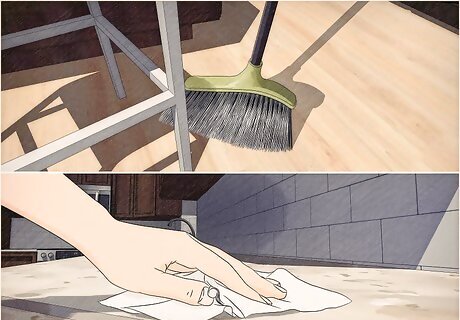
Clean your home. Ants are attracted to sugary, sweet things. If you have a messy home with lots of food particles, especially sweet crumbs, this could lead to an infestation of ants. Ants may also be drawn to water, especially in dry climates. Cleaning your home can help remove the reason for the ants, including the queen, to be in your home in the first place. Take your time to do a thorough cleaning. Look under and behind furniture. Take special care with the kitchen, dining room, and children’s bedrooms. Look under the fridge, in drawers, and in pantries for any open or spilled sugary foods or beverages that may attract ants.
Disrupt the trail. Ants leave scented insect trails for other ants in their colony to follow. Wiping the trail away or even mopping won’t eliminate it. Instead, try using vinegar to wash away the scent trail the ants follow to find food or their nest.
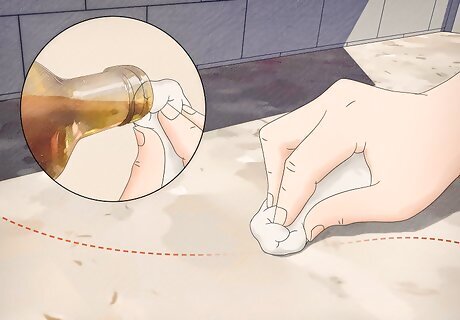
Clean kitchen counters (especially after using a cleanser product). Wipe peroxide across counters where ants walked. This breaks up the ants' scent trail. Remember, if you're using ant baits, do not wipe away the trail, since you need the ants to be able to find their way back to the colony to spread the poison.
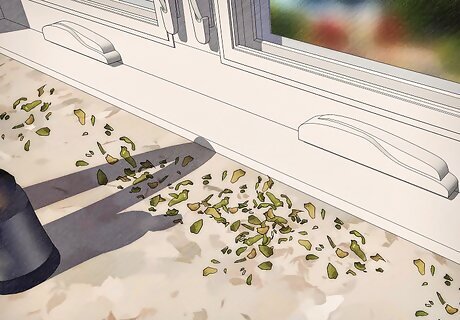
Repel the ants naturally. If you want to help keep ants away, try natural solutions. Line any windowsills or doorways with coffee grounds. You may also want to put cinnamon, crushed eucalyptus, crushed chilis, cayenne pepper, diatomaceous earth, or camphor oil around common entry points in your home to keep ants away. Placing garlic in cabinets and pantries may keep ants away. You can also place natural plants in your home that repel ants. Mint and lavender will help ants avoid your home. Using plants helps reduce any chemical dangers and puts nice plants in your house.














Comments
0 comment